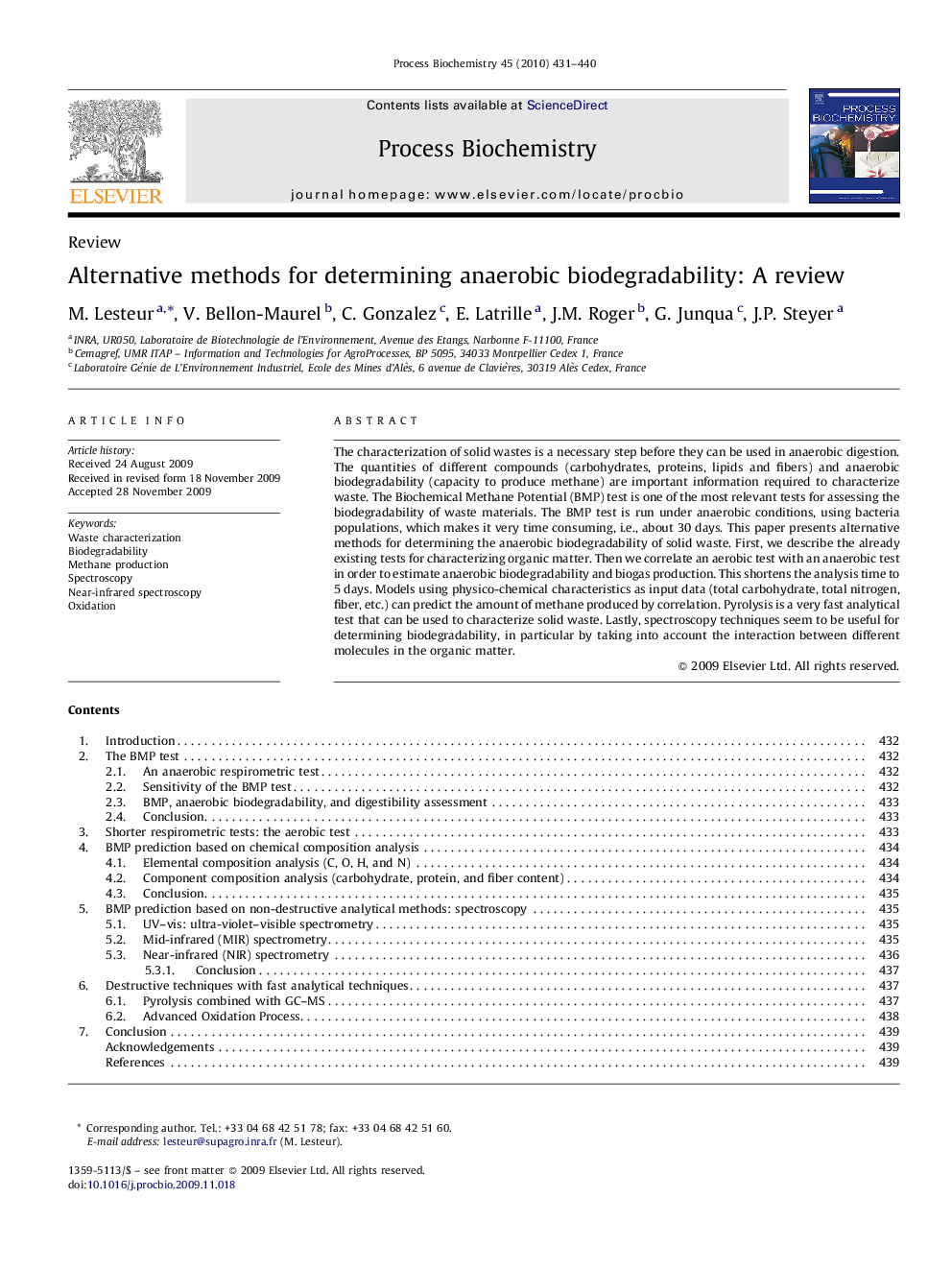| Article ID | Journal | Published Year | Pages | File Type |
|---|---|---|---|---|
| 35767 | Process Biochemistry | 2010 | 10 Pages |
The characterization of solid wastes is a necessary step before they can be used in anaerobic digestion. The quantities of different compounds (carbohydrates, proteins, lipids and fibers) and anaerobic biodegradability (capacity to produce methane) are important information required to characterize waste. The Biochemical Methane Potential (BMP) test is one of the most relevant tests for assessing the biodegradability of waste materials. The BMP test is run under anaerobic conditions, using bacteria populations, which makes it very time consuming, i.e., about 30 days. This paper presents alternative methods for determining the anaerobic biodegradability of solid waste. First, we describe the already existing tests for characterizing organic matter. Then we correlate an aerobic test with an anaerobic test in order to estimate anaerobic biodegradability and biogas production. This shortens the analysis time to 5 days. Models using physico-chemical characteristics as input data (total carbohydrate, total nitrogen, fiber, etc.) can predict the amount of methane produced by correlation. Pyrolysis is a very fast analytical test that can be used to characterize solid waste. Lastly, spectroscopy techniques seem to be useful for determining biodegradability, in particular by taking into account the interaction between different molecules in the organic matter.
